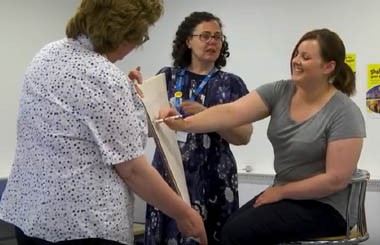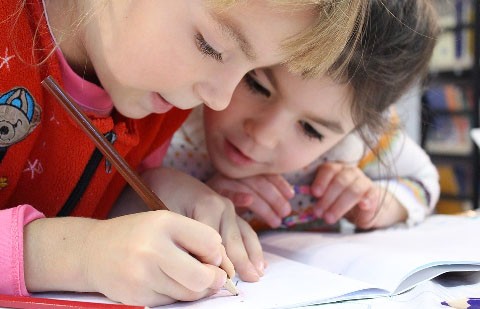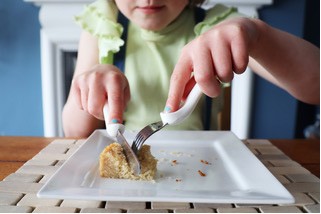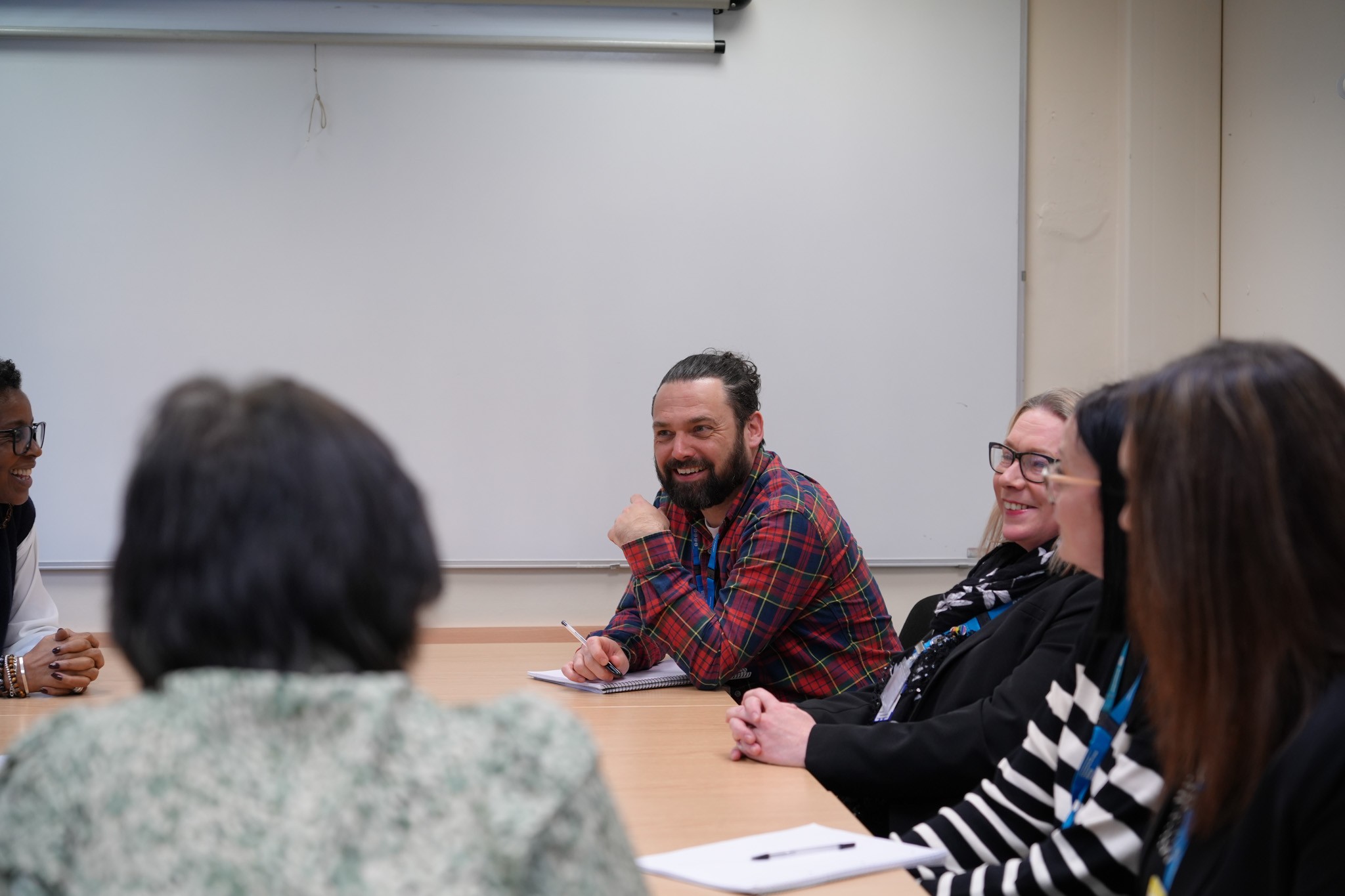On this page…
Resources for parents
- NHS change4life
- Staffordshire Connects - Aiming High: Short breaks
- British Cycling - Activities for Kids and Young People
- jump2it coaching - Children’s Classes
- Staffordshire Connects
- Stoke-on-Trent Special Educational Needs and Disabilities Local Offer
- Together Active: Sport Across Staffordshire and Stoke-on-Trent
Positioning and the environment
It's really important that your child is correctly positioned before they carry out any activities with their hands.
The theory is, if the trunk is supported and stable, the branches (arms and fingers) can perform better. Once their posture is stable, they will be able to focus much better on their fine motor skills rather than on what the rest of their body is doing. Good positioning can be achieved using your own furniture. Sometimes a different chair can help or sometimes more specialised seating is needed, and an Occupational Therapist or Physiotherapist can help with this.
The basic principles of good positioning:
The Chair
It is important that the chair is a suitable size, to provide stability when eating:
- Hips bent at 90 degrees.
- Feet flat on floor and hip width apart. A stool or box could be used to provide support.
- Bottom and back supported.
- Chair tucked in under the table.
- Elbows supported on the table.
The Table
- Ensure that your child is sat close to the table. Make sure that the table is at the right height (e.g. elbows rest comfortably on the table).
- Keep the table space clear from clutter. This will encourage them to concentrate on the task in hand.
Environment
- Try and remove any unnecessary distractions such as television, radio etc...
- Try and keep the table or work space free from clutter to encourage concentration on the task in hand.
- Try and keep noise levels to a minimum.
- Try and keep a calm work zone and allow ample time when working on a new skill.
- Sit your child next to adults who can model the skills being worked on
If your child is sitting on the floor to play, the following sitting positions will help them use their hands, and develop their balance and core stability:
- Crossed Legs
- Long Leg sitting (legs straight out in front of the torso)
- Side Sit (Legs bent and tucked to one side)
- Lying on tummy (propped up on elbows)
- Lying on their back (propped up on elbows)
- Stool Sitting: sit on a small stool
Sometimes when children are sat on the floor playing, they sit in the 'W Position' which is when their legs bend in the shape of a W. In this 'W Position' the child's base of support is wider, and their centre of gravity is lower providing the child with more stability through their hips and knees. If the child is struggling to balance, they may adopt this position to play so that they can use their hands without toppling over. This sitting position however should be DISCOURAGED because it limits the amount of trunk rotation, so that it is difficult to shift weight from side to side. It affects the development of balance reactions, and the ability to cross midline. Hip and leg muscles can also become shortened and tight which may lead to toe walking and lower back pain as the child grows. 'W Sitting' should be gently but firmly discouraged. Encourage a variety of sitting positions, as above.
Giving help
Children and young people need lots of opportunity to participate in, and practise everyday living skills to the best of their abilities. They need to be supported and encouraged from a young age to join in so that they have the best chance of becoming independent people. Some children or young people may be dependent on support but where they can be facilitated to participate in their care or activities, the impact on their wellbeing will be huge.
There are lots of ways you can support your child when they are learning and developing their everyday living skills:
Setting the right challenge
It will be important to know what activities are appropriate for your child's developmental level.
Some children will find activities easy or hard for a variety of reasons and therefore it's important to find the just right challenge so it's not too easy that they get bored, and it's not too hard that they give up. It might be helpful to break an activity down in smaller chunks or simple steps so that you can teach smaller sections at a time and maybe find out where things are going wrong.
Here's an example of breaking down a scissor activity into simple steps:
- Pick up and position scissors in hand
- Grip the paper in non-dominant hand
- Line up the scissors to the mark to be cut
- Open scissor blades
- Make a cut
Prompts
Offering your child some prompts to help them understand better what they need to do within the task can help. There are 3 different types of prompts you can use:
- Visual Prompts: these are photos, symbols, or words to word to aid learning. An example could be a schedule of first, second, third, Now and Next cards. You could make a slide show or photo album of photos to show either the order of tasks needed in a day
- Physical: these are hands-on prompts such as modelling the task, showing and demonstrating the task in person or by video. Manual prompts such as a tap to tell them which hand to use or a point to show them where to look. You can use gestures such as nods or thumbs up for good work or a shake of head for 'Not that way'
- Verbal Prompts: these are the verbal commands or information you give to instruct or direct your child when completing a task, for example 'what do we do first?' or 'What next?' or 'Can you put red over green?'
The Prompt Continuum is:
- verbal
- gestural
- modelling
- manual prompts
When using prompts you may start with lots of prompts and a mixture of all of them, and gradually remove them or delay your timing of giving them.
When helping your child to learn a new tasks
- SHOW your child how to do it, or show them videos of the task
- TELL your child how to do it, talking through exactly what you are doing each step of the way
- DO it together using hand-over-hand. This is where you place your hands over the hands of your child to help guide the right movements of the hands. Hand-over-hand prompting may help a child learn how to hold scissors, make the movements to draw or colour in, brush their hair and use a knife and fork. The goal of the adult is to begin to fade the hand-over-hand prompt, perhaps pairing it with a verbal prompt as the physical prompt is faded. Sometimes the hand-over-hand prompt can be faded to a less invasive prompt, such as a finger tap on the back of child's hand, to remind them of the hand movement needed.
Try out different ways of helping until you find what suits your child. You can use each of these ways individually, or any combination, depending on what suits your child. For a lot of children it can be difficult to watch and listen at the same time. So try each way individually before you try using combinations. Once you find what works for your child stick with this approach.
Adaptive equipment
Sometimes adaptive equipment can help your child perform a task more successfully such as a different type of pencil or scissors. See the section on Equipment.
Please find an overview, useful information, and links on some of the common conditions experienced by children. We work with children with a range of conditions and difficulties so please contact the service if you require additional information or referral advice.
Hemiplegia is a form of Cerebral Palsy, caused by a brain injury that results in a varying degree of weakness, stiffness (spasticity) and lack of control in one side of the body. The definition comes from the Greek word 'hemi' meaning half.
Hemiplegia is caused by injury to parts of the brain that control movements of the limbs, body, face, etc. This injury may happen before, during, or soon after birth.
We also talk about a right or left hemiplegia, depending on the side affected. Generally, injury to the left side of the brain will cause a right hemiplegia and injury to the right side a left hemiplegia. Hemiplegia is life long and non-progressive.
Useful websites
- Children's Hemiplegia and Stroke Association - Hemiplegia which focuses on the impact on Children and their families, containing lots of information, advice and support.
- Newcastle University: Hemiplegia Research - Fun 'n' Games This website gives ideas for games and toys that can be used to practise movements that children with hemiplegia find difficult, providing a fun way to get the two hands busy working together.
- contact - Hemiplegia support Contact is a charity providing support and information to people with hemiplegia and their families in the UK.
DCD is a neuro-developmental condition that affects physical coordination. It causes a child to perform less well than expected in daily activities for their age and appear to move clumsily.
Around 5% of school aged children are thought to be affected, 75% of those diagnosed will be boys. This does not mean that DCD necessarily affects boys more than girls, but that it is better spotted in boys. The condition may run in families but can also appear where no family history is evident.
DCD is a condition that affects movement and coordination in children and adults. It is generally not diagnosed until a child is six and is a lifelong condition. The difficulties experienced by people with DCD may differ over the course of their life and many people learn to manage it.
DCD is diagnosed by a Paediatrician, usually in consultation with an Occupational Therapist, who will complete standardised assessments. DCD is a separate condition but can exist alongside other conditions such as Dyslexia, Attention Deficit Disorder, and Autistic Spectrum Disorder.
Problems can include:
- Movement. Fine and gross motor coordination and dexterity can be impacted and physical skills are more effortful to learn and retain.
- Organisation and Planning. This affects a person's body, thoughts, routines and equipment use.
- Visual Perception. This impacts how the brain interprets visual information and can cause problems with school work.
- Speech. Verbal Dyspraxia affects the way a person produces speech. It may be diagnosed separately to general DCD.
What you might see:
Your child has difficulties with movement and may experience difficulties with all or some of the following:
- Self-Care: washing hair effectively; difficulties doing up buttons, laces and zips; trouble using a knife and fork together; wiping after toileting; putting clothes on the right way round
- Tool Use: scissors; cutlery; sports equipment; toothbrush
- Handwriting and drawing: Both neatness and speed, although girls often master this skill well
- Organisation and planning: laying out school work correctly; orientating clothing; following routines
- Play: construction toys and crafts
- Sports and Physical play: learning to ride a bike; ball / racket games; outdoor equipment
- Learning new motor tasks
As your child grows they may experience their difficulties change, often with tool use and organising themselves becoming more of a problem than when they were younger.
What should you do if you are worried your child may have DCD
Talk to your school and find out if they have any concerns about your child. Talk to your GP to discuss a referral to a Paediatrician to explore the issues your child is experiencing further.
Useful Websites
- CanChild - Diagnoses is a research centre dedicated to generating knowledge & transforming lives of children and youth with developmental conditions and their families.
Hypermobility is the term used to describe the ability to move joints beyond the normal range of movement. Joint hypermobility is common in the general population. It may be present in just a few joints or it may be widespread. It is most common in childhood and adolescence, in females, and Asian and Afro-Caribbean races. It tends to lessen with age.
In many people joint hypermobility is of no medical consequence and commonly does not give rise to symptoms. Hypermobility can even be considered an advantage, for example athletes, gymnasts, dancers and musicians might specifically be selected because of their extra range of movement.
We offer training for education staff on hypermobility which is run regularly throughout the year. Please contact the department on 01782 427 450 for details.






